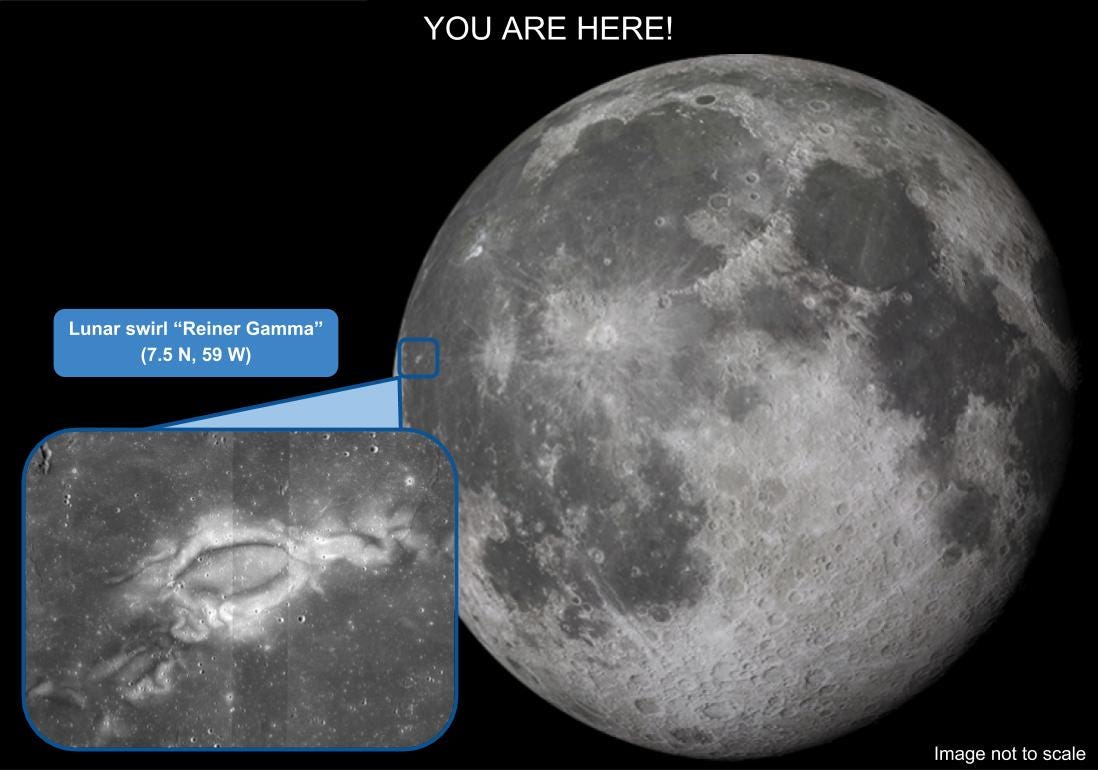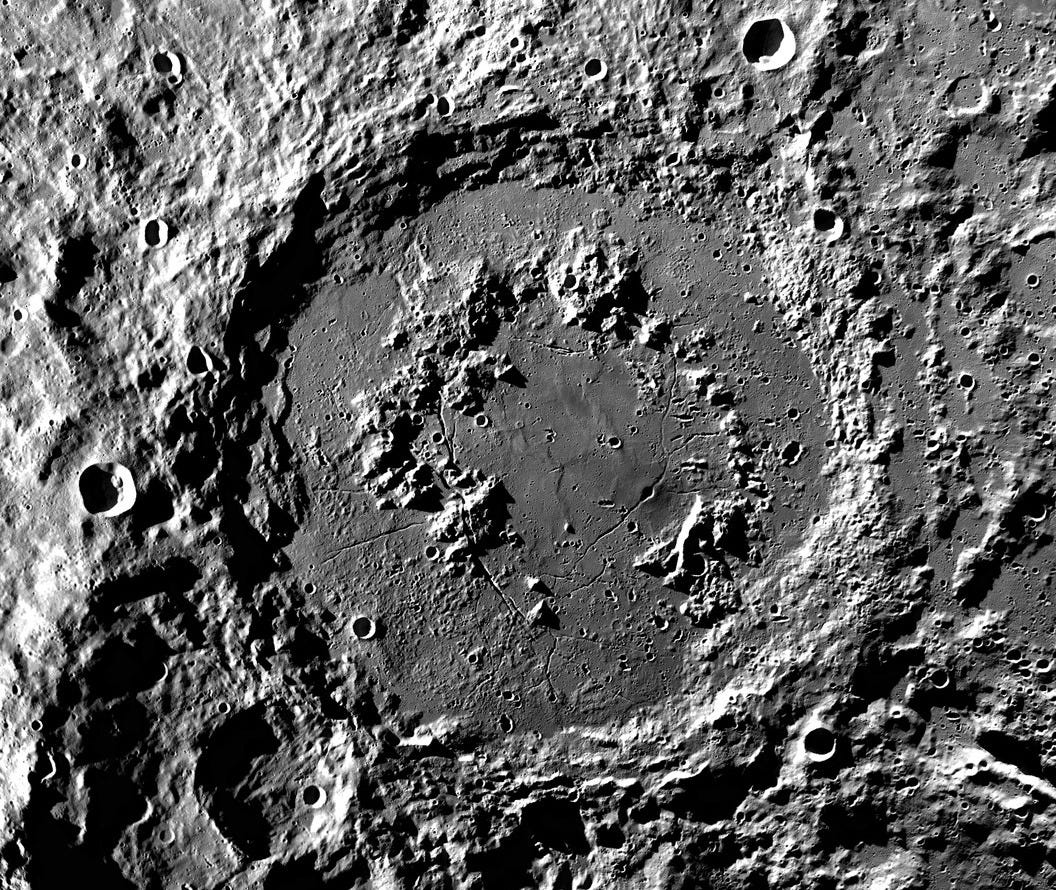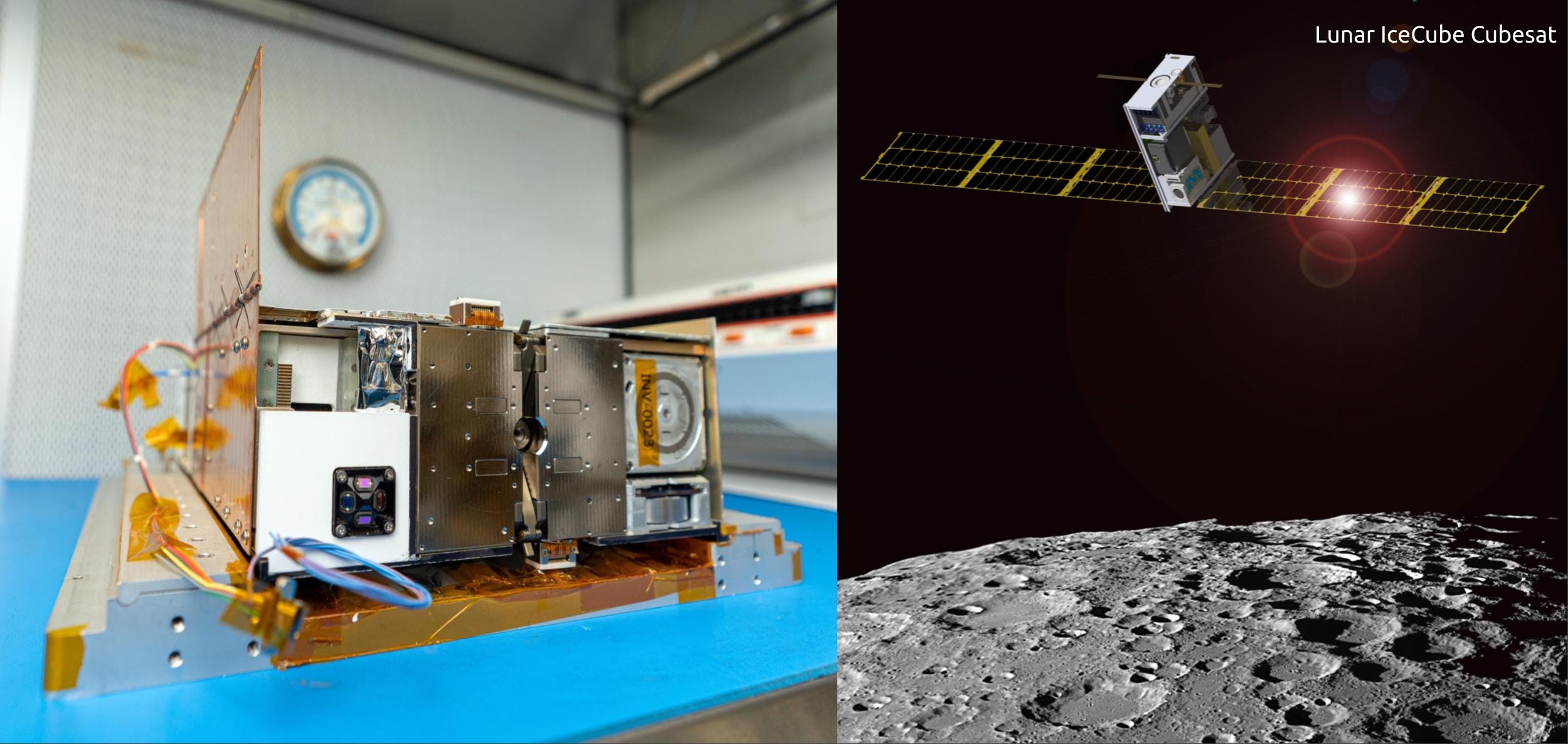Moon Monday Issue #31
NASA missions to the Moon's farside and an enigmatic swirl, France expresses interest in Chinese-Russian lunar science base, 4.2 billion years old Apollo samples, Yutu-2 radar results, and more.
Highlight
NASA’s CLPS program to send science instruments to the Moon via commercial landers has entered a new phase. Via the newfound PRISM initiative, NASA is broadening the scope of its CLPS science investigations, starting with two missions in 2024. NASA is yet to select commercial providers for these surface missions but has announced their landing regions and the key instruments to be onboard.
One of the two missions is to the lunar swirl of Reiner Gamma, which has a weak local magnetic field, possibly a remnant from the time the Moon had a global magnetic field. The mission will have a joint payload suite called Lunar Vertex on a lander and rover to map the magnetic field from the swirl’s surface and study its properties in-situ. This will be the world’s first mission to a lunar swirl, and will provide insights into how they form and evolve, as well as better our understanding of the Moon’s interior and core, and its magnetic evolution.

The second mission will go to the Schrödinger crater, the best preserved impact basin of its kind. This will be NASA’s first mission to the farside, and will carry two distinct lunar-night-surviving seismometers that will help better understand the Moon’s internal structure, and know the amount and rate of micrometeorite impacts on the farside to plan future Artemis crewed missions. The mission will also carry a drill, a probe, and a magnetic sounder to measure the Moon’s internal heat flow and electrical conductivity. The Schrödinger crater is an excellent landing site choice especially because it’s tied to several fundamental mysteries surrounding the magma ocean hypothesis, Late Heavy Bombardment, and the Moon’s thermal evolution.

Exploration
On June 8, the U.S. Senate passed an amendment to the Endless Frontier Act, which if signed into law by the U.S. House would mandate NASA to add another company in addition to its SpaceX Starship selection to compete for landing the first Artemis astronauts on the Moon. The bill has been revised from its original form to explicitly preserve the SpaceX award while giving NASA 60 days instead of 30 to select another company. A passed bill will authorize $10 billion in additional funding to NASA over a 5-year period. However, the U.S. Congress would need to appropriate the funds every year for the amount to be actually available to NASA. The bill also asks the agency to maintain a version of the SLS core stage for testing throughout the Artemis program, something NASA has explicitly said it doesn’t need given that the rocket’s recent successful Green Run tests were an all-encompassing one.
Lunar IceCube, one of the 13 small satellites to be onboard NASA’s Artemis I mission, has passed space environment testing at NASA Goddard. The team also tested the functioning of its infrared spectrometer, which will map water on the Moon’s surface from lunar orbit.

Intuitive Machines has entered an agreement with KSAT for the latter to provide commercial Earth communication services for Intuitive Machines’ first, second, and all future Moon missions, and at every stage of them—from launch to landing and surface operations. NASA requires CLPS companies to source their own mission infrastructure and not rely on NASA’s services for the same, including things like getting a launch vehicle and availing ground networks. The other context for this deal comes in light of KSAT expanding their ground network to specifically serve Moon missions in this decade. Notably, KSAT is part of one of the two consortia selected by ESA for its Moonlight initiative, an envisioned commercial lunar communication and navigation service.
Airbus is on track to deliver the European Service Module (ESM) of the Orion spacecraft to be used for NASA’s Artemis II crewed mission in 2023. As part of an integrated test series, Airbus most recently validated the gimbaling of the ESM’s main engine, which would help Orion maneuver and change direction during flight. The ESM is Europe’s contribution to the U.S.-developed Orion spacecraft, and provides propulsion, power, water, and air to Orion.

ispace Japan has signed loan agreements worth $17.9 million from 4 major banks in the country, the amount of which it plans to use as backup funds for their 1st Moon landing mission in 2022, develop the lander for their 2nd mission in 2023, and study larger landers for future missions.
In a videoconference between heads of the Russian and French space agencies, the latter expressed interest in participating in the Chinese-Russian International Scientific Lunar Station, a long-term science base at the Moon’s south pole. While France’s involvement would depend on ESA’s lunar exploration ambitions set during its Ministerial Council Meeting in 2022, the French space agency is open to having technical and programmatic discussions for now.
Science
An international group of researchers have found 4.2-billion-year old minerals inside Apollo 17 samples based on Uranium-Lead age dating. Next, they studied nanoscale cross-sections of the samples, ran extensive impact simulations, and considered lunar cratering records to conclude that the ancient minerals most likely are from the formation of the Moon’s Serenitatis basin. This has implications for the Late Heavy Bombardment period of the solar system about 4 billion years ago, a hypothesis critical to explaining the solar system’s evolution. The fact that Serenitatis seems to be 4.2 billion years old, instead of the previously predicted 3.8 to 4 billion years old, means that either the Late Heavy Bombardment was prolonged—and not a sharp spike in impacts—or that Serenitatis isn’t connected to that event at all. All this insight from really tiny amount of samples. 🤯
Scientists have analyzed data from the Yutu-2 rover’s ground penetrating radar at the Chang’e 4 landing site on the Moon’s farside. They found that the thickness of the lunar regolith at the site is about 12 meters, much thicker than the about 8 meters at Chang’e 3’s landing site in a mare area on the nearside. They also found that the Moon’s farside may be bombarded more frequently than the nearside, which could explain, after accounting for the bias with mare areas, the increased regolith thickness on the farside.
More Moon, more solar system
I have attempted to explain the many fundamental implications of the rocket equation without any math. The article covers:
- How Earth’s gravity is holding us back
- Why aliens on ‘Super Earths’ can’t leave their planet using chemical rockets
- Our Moon an an efficient, long-term rocket platform from an energy expenditure point of view 🌗🚀
Thank you Jason Davis and Dany Waller for supporting me and powering this edition of Moon Monday.
Everyone, I’m publishing this one-of-a-kind Moon exploration newsletter for free, with no ads. And it will stay that way. If you like my work, support me to keep it going.
